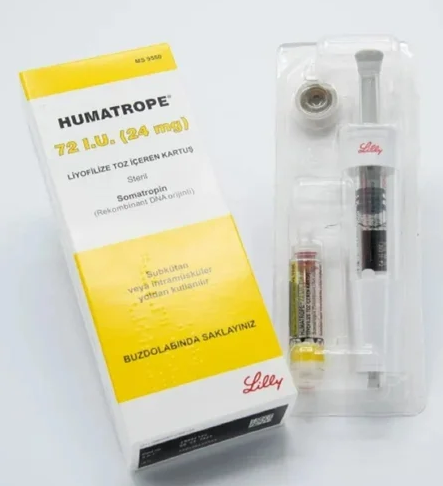What You Should Know About Humatrope?
Introduction
The artificial human growth hormone is called Humatrope. It was originally used in 1987 to treat children with sluggish development, those who were born short-statured, or those who couldn’t produce enough growth hormone on their own because of different illnesses such as chronic renal failure, Turner syndrome, or Noonan syndrome. The most common Humatrope dosages are 6 mg, 12 mg, and 24 mg cartridges, which are given through Humatrope injection.
Who can use the injection of Humatrope?
By injecting Humatrope, patients suffering from the following ailments can be treated:
- Growth stopping
- A lack of growth hormone
- Short bowel disorder (intestinal disorder)
- Hiv-related causes of wasting or weight loss
Children who have Turner syndrome, Noonan syndrome, or idiopathic low stature benefit from humatrope’s ability to increase their height.
What happens when you inject Humatrope?
Injecting Humatrope replaces the growth hormone that is necessary for a person’s healthy development in both children and adults. The pituitary gland, which is situated near the base of the brain, produces the growth hormone. After being injected, Humatrope is released into the circulation and travels to different bodily tissues where it increases the synthesis of IGF-1, an important hormone for growth and development. Therefore, the Humatrope injection aids in promoting IGF-1 synthesis, which is essential for growth.
Why use Humatrope, you ask?
Children with Turner syndrome, SHOX deficiency, or those who are born unusually smaller than their classmates and do not catch up in height by the ages of 2-4 are treated with Humatrope injection. Adults also utilise it to accelerate their growth.
How are injections of Humatrope used?
Typically, a syringe is used to inject Humatrope into a muscle beneath the skin. The brand affects the injection. To prevent issues under the skin, it is always essential to make sure that the injection location on the skin is changed each time you inject. The best course of treatment can be recommended by a doctor; thus, it is wise to heed their advice. In addition, the dosage of Humatrope injection is determined by the patient’s age, weight, past reaction to therapy, and overall health. Shaking is not advised when giving the injection; the solution should be prepared without shaking. If there are any signs of discolouration, they should be looked for and the infusion should not be utilised.
Injection of Humatrope side effects
Although there are no severe negative effects associated with the Humatrope injection, some moderate ones may be felt by the patient.
Side effects of Humatrope include:
- Migraine Vomiting
- Nausea
- Drained and sore
- Overall physical weakness
It is advised that you stop taking the drug and see your doctor right away if you develop serious side effects including large weight gain, chronic weariness, ear itching, joint or hip discomfort, numbness, swollen ankles, seizure, or extreme abdomen pain. Children having a history of respiratory issues or those who have Prader-Willi syndrome shouldn’t have Humatrope injections. Adults who receive the Humatrope injection may be at an increased risk of developing cancer or tumours, therefore you should exercise caution and consult your doctor before using the medication.












Leave a Reply